
2,500 people gathered to witness the dedication of Magic Mountain’s 1st building, still standing at Heritage Square’s entrance today. The Cavalry Post and companion Stockade were dedicated “in memory of the U.S. Cavalry” in the presence of more than 50 mounted horsemen and horsewomen, including the Lakewood Westernaires, Buffalo Bill Riding Club, Thunderbird Riding Club, and many more. Among the political digniaries was Mayor Clark Carpenter of Golden. It was truly a momentous occasion, the first piece of a new theme park, whose planners envisioned a virtual tour through it like this:
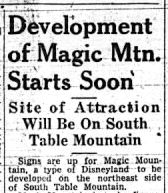
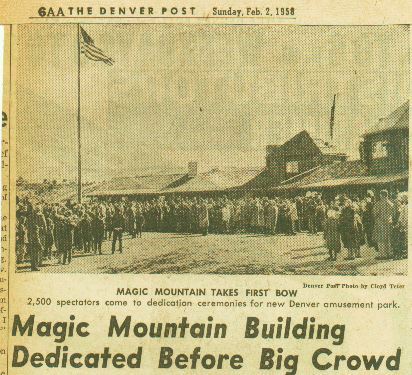
 “History shows that the U.S. Cavalry opened the West to civilization; made this area safe for pioneers to move here, settle here and build their homes here. It was the Cavalry Post through which early settlers entered the West and founded settlements that later became villages, towns and cities. Magic Mountain designers are saluting the Cavalry in their planning for the Park. The first thing planned for you to see when you enter the site are parking lot attendants dressed as Cavalrymen; the first thing you will see upon enterting the park itself will be an authentic reproduction of a Cavalry Post and Stockade.
“History shows that the U.S. Cavalry opened the West to civilization; made this area safe for pioneers to move here, settle here and build their homes here. It was the Cavalry Post through which early settlers entered the West and founded settlements that later became villages, towns and cities. Magic Mountain designers are saluting the Cavalry in their planning for the Park. The first thing planned for you to see when you enter the site are parking lot attendants dressed as Cavalrymen; the first thing you will see upon enterting the park itself will be an authentic reproduction of a Cavalry Post and Stockade.
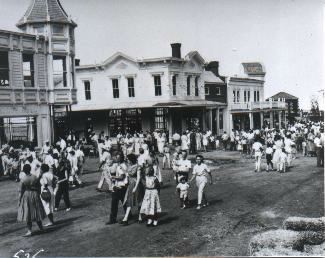
Magic Mountain visitors at Centennial City, 1959
Photo courtesy Golden History Center
Originally published in Denver Post, September 27, 1959
Visitors to Magic Mountain will progress from the Cavalry area into a proposed reproduction of a western village, much the same as early settlers were able to go into similar villages because their passage was made safe by the Cavalry.
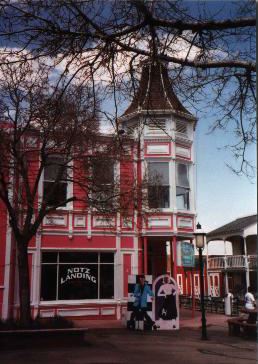
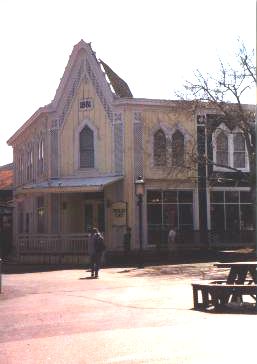
At the edge of Magic Mountain Village, it is planned to have a Fairgrounds, much the same as every Western Town had its own fairgrounds area, where families met for picnics and entertainment. In the Magic Mountain Fairgrounds, plans call for various types of amusement facilities, such as a “Mine Ride” and “The Creation of the Earth Ride”. All such rides will have authenticity and educational concepts as their underlying theme.
Included in the plans for Magic Mountain are areas for such things as: a river ride, that will tell the story of early-day fur trappers and the experiences they had on the Colorado River; a Magic of Industry exposition, telling the story of a century of progress in the West; a “Storybook lane” for the younger set; a full scale narrow gauge railroad circling the entire park; and an authentic reproduction of the Cherrylyne horse-drawn streetcar that used to operate between Denver and Englewood.”
Magic Mountain, as great as it was planned, never found financial footing. It operated in ways for 3 years, 1957-60, during which time creator Walter F. Cobb himself stepped down as president when the situation deteriorated too far for it to remain a sound venture for him, although he was not blamed for its troubles. The park was forced into foreclosure, unable to pay for its own construction. Famous New York developer William Zeckendorf tried to save Magic Mountain, and Cobb himself made an 11th hour attempt, but soon developers and courts realized its fate was inexorable. Magic Mountain was auctioned off late in 1960. It would take 10 years before new owners successfully endeavored to open it again, and in 1971 the place was finally reborn and reopened by the Woodmoor Corporation as Heritage Square. Later on in 1973 upon historic Jackson Hill the second alpine slide built outside a ski resort in the United States was created.
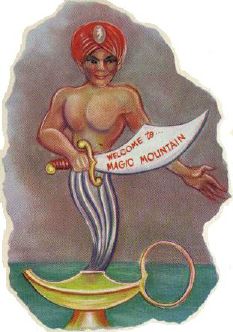
Magic Mountain’s story is not done justice, however, without mentioning the famous historic company Heritage Square keeps. Some of Marco’s team had only worked on Disneyland for Disney before Magic Mountain. Others, like Dick Kelsey, had been veterans of the company, Kelsey himself having been art director or an artisan for films like Fantasia, Bambi, Dumbo and Pinocchio. Most of the Marco design team had been Hollywood art directors who had worked on feature films before taking the plunge into reality with Disneyland. Another art director named Randall Duell, who had worked at MGM for such films as Singing In The Rain, joined Marco as well. During the late 1950s, riding on the heels of the success of Disneyland, a whole regional theme park movement swept the nation, with Marco Engineering among its prominent builders. Other theme parks Marco designed and built were Freedomland in the Bronx of New York City, and Pleasure Island at Wakefield near Boston. Marco began the design work of Six Flags Over Texas in the Dallas/Ft. Worth area, which was taken over in 1959 by Duell. He completed Six Flags, which became a wild success as the second wholly successful theme park in the country. This gave rise to the industry with the knowledge Disneyland’s success could be duplicated by others, and Duell became famous across the globe as one of the foremost theme park designers in history, including the famous Magic Mountain in California. Today, here at Golden, our nation’s second-oldest regional theme park, now half a century old and reopened over 35 years as Heritage Square, stands as a testament to the earliest dreams and aspirations of America’s theme parks.
